SUMMARY
This is AI generated summarization, which may have errors. For context, always refer to the full article.
![[OPINION] So how much greenhouse gas does nuclear power really generate?](https://www.rappler.com/tachyon/2021/11/cop26-delegate-watching-screen-glasgow-november-8-2021-reuters.jpg)
The following is the 19th in a series of excerpts from Kelvin Rodolfo’s ongoing book project “Tilting at the Monster of Morong: Forays Against the Bataan Nuclear Power Plant and Global Nuclear Energy.“
Having gone through the entire nuclear cycle in four forays, let’s now discuss just how “carbon-free” nuclear power really is.
This drawing, modified from a World Nuclear Association source, uses data from the International Atomic Energy Agency to report how much CO2 each of the main electricity sources generates per kilowatt-hour. Naturally, it greatly minimizes what nuclear power contributes, but it will guide us as we look at other five electricity industries.

First, a clear sense of what a kilowatt-hour or kWh is: One kWh of electricity keeps one 1,000-watt bulb, or ten 100-watt bulbs, lit for an hour. The monthly electricity bill for an average Filipino family is about 200 kWh. American families, extravagant and wasteful, use 900 kWh.
The paired columns give high and low estimates of the greenhouse gases each major electricity-generating industry emits. Only coal and natural gas make CO2 directly by burning carbon; this is shown in red. The white portions of their columns are how much front-end and back-end CO2 they emit, because fossil fuels are burned to mine and transport coal, and to drill for and transport natural gas.
Carbon dioxide is by far the most abundant greenhouse gas, but there are others. Their greenhouse impacts are compared to that of CO2, and so the units used are “grams CO2-equivalent per kilowatt-hour.” The sense of the term will become clear when we discuss methane.
Example: the leftmost column for coal tells us that burning the worst coal to make one kilowatt-hour of electricity releases into the atmosphere 289 + 1017 = 1,306 grams, or 1.3 kilos of CO2.
Hydropower, solar photovoltaic, and wind power all emit front- and back-end carbon dioxide. Diesel-powered machines build hydropower dams and dismantle them when they get dangerously old. Manufacturing solar panels and wind generators, then dismantling and storing old ones as waste, also require electricity from fossil fuels.
Coal
Burning coal produces by far the most greenhouse gas. What empowered the 18th century industrial revolution still provides a quarter of the world’s energy, including most Philippine electricity.
Burning coal emits smoke that blots out the sun and coats the terrain and our lungs with soot. Its gaseous sulfuric and nitric wastes poison the air we breathe and acidify the rain.
Toxic arsenic, lead, mercury, cadmium, chromium, and selenium leak out from coal-ash dumps, polluting surface and well waters, poisoning fish, and causing cancers and neurological diseases.
Methane
“Natural gas” is almost all methane. Each molecule consists of four hydrogen atoms attached to a carbon atom, hence its chemical formula, CH4.
Methane is odorless; the garlicky smell from a leaky gas stove is just an artificial scent added to warn people about leaks. Breathing methane deprives your lungs of oxygen. People commit suicide by sticking their heads in unlit ovens.
When methane is burned to generate electricity, it releases CO2 into the air:
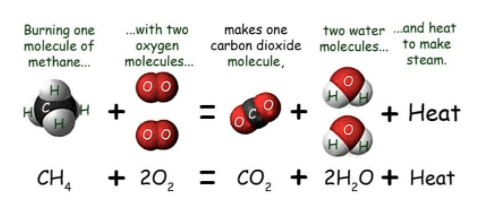
Methane also contributes to global warming in other ways. Thousands of oil and gas wells, abandoned uncapped since the 1860s, continue to leak methane. In our times, huge amounts of methane are recovered from deeply buried rocks by “hydraulic fracturing” or “fracking”: Fluid mixtures containing chemicals and round sand grains are pumped at enormous pressures into deep wells, cracking the rock extensively with tiny fractures. The sand grains roll into the fractures and hold them open to release the methane. Most is pumped out, but some unavoidably leaks into the air.
BNPP and nearshore reclamation are my Philippine foes. One of my main enemies here in Wisconsin is frack-sand mining, which devastates the landscape and pollutes the environment.
Like nuclear power, methane is hyped as a carbon-free answer to global warming. But methane is a much worse greenhouse gas than CO2. Over a century, one gram of leaked methane causes as much global warming as 25 grams of CO2.
That’s why one gram of methane is assigned the greenhouse value of “25 grams CO2 equivalent.”
Nuclear power
Nuclear agencies are seriously hypocritical in two ways. They report only the amount of CO2 generated at the nuclear plant. They ignore all the front-end CO2 made during exploration, stripping, mining, milling, enrichment, fuel fabrication, and shipping, as well as all the yet-unknown but major back-end costs of waste management and disposal.
Second, they use “grams CO2 equivalent” for methane, but ignore their industry’s use of fluorine and chlorine for enriching and fabricating uranium fuel. Those processes leak “high greenhouse warming potential” gases (high GWP) fluorides and chlorofluorides. The industry, notoriously secretive because it is so intertwined with the military, avoids reporting GWP emissions.
GWPs are hundreds to tens of thousands of times more potent than CO2. The common greenhouse gases – carbon dioxide, water vapor, and methane – cycle naturally into and out of the atmosphere. But GWPs are chemically inactive and can survive in the atmosphere for thousands of years. Only when they occasionally stray up into the stratosphere are they ripped apart by the sun’s ultraviolet and X-rays.
This panel compares the IAEA figures for nuclear CO2 generation with careful analyses of all the “cradle to grave” fossil-fuel energy costs of nuclear power by Dutch scientist Jan Storm van Leeuwen and Australian physicist Manfred Lenzen.

Storm van Leeuwen estimated that producing nuclear fuel from ores containing 0.13% uranium releases 84 to 130 grams of CO2 per kilowatt-hour of electricity, 19% to 30% as much CO2 as the best natural gas-fired plants. But when the richer uranium ores are exhausted and the industry has to mine ores containing only 0.05% uranium, the CO2 emissions will rise to between 22% and 33% as much as using natural gas.
Storm van Leeuwen calls nuclear reactors the “carbon trap.” Being so expensive, they must be used. As time goes on, to continue fueling them will force the industry to mine leaner ores. This will require increasing amounts of energy, and will inject increasing amounts of CO2 into the atmosphere. Continuing to mine ever leaner ores will accelerate CO2 generation, an “energy cliff.”
The Australian government commissioned a similar study by Lenzen to guide its energy policy. Lenzen’s assessment is even more pessimistic: using 0.15% uranium ore generates 212 grams of CO2 per kWh, about half as much as natural-gas plants make.
Moreover, when the rich uranium ores are used up and only leaner ores with only 0.01% uranium are mined, carbon emissions will rise to 527 grams per kWh – more than from burning natural gas! When the industry must mine such ores, it will add as much CO2 to the atmosphere as if the fossil fuels were instead burned directly to generate electricity.
Calculating how much CO2 nuclear power emits yields only minimal results, because their noxious wastes continue to pile up at the power plants. Protecting them into the future will require ever more money and emitted CO2 until permanent storage is solved. Which may be never.
Furthermore, nuclear fuel has been made for decades from nuclear weapons (Foray 13). To make the weapons produced large but unknowable amounts of CO2.
The time has come for us to familiarize ourselves with the atom that yields nuclear power, in our next two forays. – Rapplr.com
Keep posted on Rappler for the next installment of Rodolfo’s series.
Born in Manila and educated at UP Diliman and the University of Southern California, Dr. Kelvin Rodolfo taught geology and environmental science at the University of Illinois at Chicago since 1966. He specialized in Philippine natural hazards since the 1980s.
Previous pieces from Tilting at the Monster of Morong:
- [OPINION] Tilting at the Monster of Morong
- [OPINION] Mount Natib and her sisters
- [OPINION] Sear, kill, obliterate: On pyroclastic flows and surges
- [OPINION] Beneath the waters of Subic Bay an old pyroclastic-flow deposit, and many faults
- [OPINION] Propaganda about faulting, earthquakes, and the Bataan Nuclear Power Plant
- [OPINION] Discovering the Lubao Fault
- [OPINION] The Lubao Fault at BNPP, and the volcanic threats there
- [OPINION] How Natib volcano and her 2 sisters came to be
- [OPINION] More BNPP threats: A Manila Trench megathrust earthquake and its tsunamis
- [OPINION] Shoddy, shoddy, shoddy: How they built the Bataan Nuclear Power Plant
- [OPINION] Where, oh where, would BNPP’s fuel come from?
- [OPINION] ‘Megatons to Megawatts’: Prices and true costs of nuclear energy
- [OPINION] Uranium enrichment for energy leads to enrichment for weapons
- [OPINION] Introducing the nuclear fuel cycle
- [OPINION] On uranium mining and milling
- [OPINION] Enriching and fabricating BNPP’s uranium fuel
- [OPINION] Decommissioning BNPP, and storing the nuclear dragon’s radioactive manure
Add a comment
How does this make you feel?

![[OPINION] Who decides whether Bataan should go nuclear?](https://www.rappler.com/tachyon/2023/08/imho-bataan-nuclear-powerplant.jpg?resize=257%2C257&crop=271px%2C0px%2C720px%2C720px)
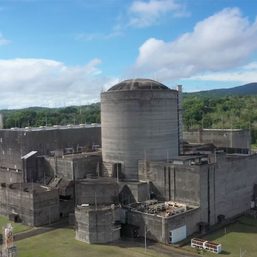
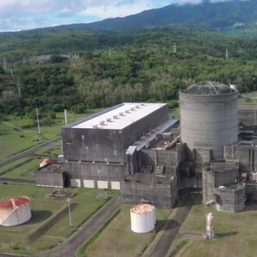
![[OPINION] Nuclear energy should not become major part of Philippine energy system](https://www.rappler.com/tachyon/2023/01/nuclear-energy-january-26-2023.jpg?resize=257%2C257&crop=205px%2C0px%2C900px%2C900px)
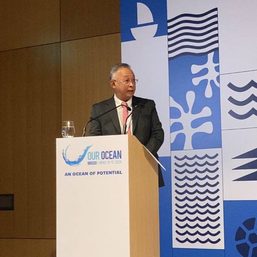


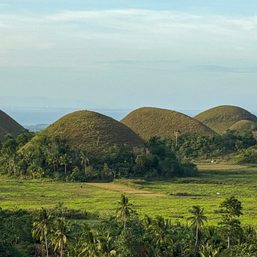

There are no comments yet. Add your comment to start the conversation.